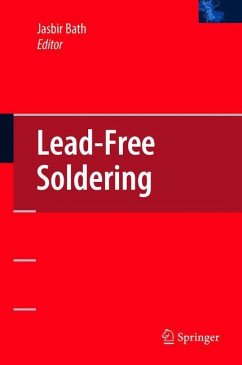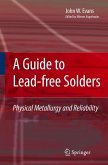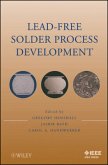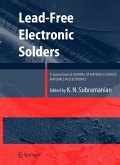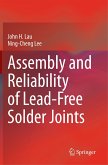The push toward lead-free components and in turn lead-free soldering in all computers, cell phones and other electronic devices has taken on a greater urgency in as laws have been passed and are pending in the United States, the European Union and Asia which ban lead and lead-bearing solder. These new restrictions on hazardous substances are changing the way electronic devices are assembled and specifically affect process engineering, manufacturing and quality assurance.
This book offers in a single volume a broad collection of practical techniques for lead-free soldering design and manufacture, which up to now have been scattered in difficult-to-find scholarly sources. The book includes the latest information on proposed changes to lead-free standards, and up-to-date analysis of government and legislative activities and regulations in North America, Europe and Asia.
The past few years have seen major developments in soldering materials and processes for electronics assembly manufacture due to the movement from tin-lead to lead-free soldering. The removal of lead from electronics solders due to environmental considerations first developed with proposed US legislation in the early 1990s. At that time, the alternatives had not been fully explored, so a ban on the use of lead in electronic solders was put on hold. However the seed was sown for development with various projects initiated during the 1990s in Europe, the Americas, and Asia. Based on government pressures, Japan OEMs began to move to lead-free solder products from 1998 and this, combined with the European Union ROHS (Restriction of Hazardous Substances) legislation enacted in 2006, drove the global manufacture of electronics consumer products with le- free solders. From 1998 to the present, the development of lead-free solder materials and processes has progressed to such an extent that development work moving forward will typically only concentrate on lead-free solders and components rather than tin-lead solders and components. This book aims to give the latest information on development of the lead-free soldering materials and processes and identify where more work is needed. The chapters of the book describe legislation, alloys, reflow, wave, rework, reliability, backward and forward process compatibility, PCB surface finishes and PCB laminates, and standards affecting the general lead-free soldering arena.
This book offers in a single volume a broad collection of practical techniques for lead-free soldering design and manufacture, which up to now have been scattered in difficult-to-find scholarly sources. The book includes the latest information on proposed changes to lead-free standards, and up-to-date analysis of government and legislative activities and regulations in North America, Europe and Asia.
The past few years have seen major developments in soldering materials and processes for electronics assembly manufacture due to the movement from tin-lead to lead-free soldering. The removal of lead from electronics solders due to environmental considerations first developed with proposed US legislation in the early 1990s. At that time, the alternatives had not been fully explored, so a ban on the use of lead in electronic solders was put on hold. However the seed was sown for development with various projects initiated during the 1990s in Europe, the Americas, and Asia. Based on government pressures, Japan OEMs began to move to lead-free solder products from 1998 and this, combined with the European Union ROHS (Restriction of Hazardous Substances) legislation enacted in 2006, drove the global manufacture of electronics consumer products with le- free solders. From 1998 to the present, the development of lead-free solder materials and processes has progressed to such an extent that development work moving forward will typically only concentrate on lead-free solders and components rather than tin-lead solders and components. This book aims to give the latest information on development of the lead-free soldering materials and processes and identify where more work is needed. The chapters of the book describe legislation, alloys, reflow, wave, rework, reliability, backward and forward process compatibility, PCB surface finishes and PCB laminates, and standards affecting the general lead-free soldering arena.
From the reviews:
"Jasber Bath has gathered together a good mixture of industry and academic authors to cover each step in the path to RoHS compliance. ... it is fairly obvious that the main focus on the book is manufacturing and the impact of lead-free technology. It is fairly easy to read so very suitable for engineers and non technical staff to get a balanced overview or the real hands on story." (Bob Willis, Electronics Production World, August, 2007)
"Jasber Bath has gathered together a good mixture of industry and academic authors to cover each step in the path to RoHS compliance. ... it is fairly obvious that the main focus on the book is manufacturing and the impact of lead-free technology. It is fairly easy to read so very suitable for engineers and non technical staff to get a balanced overview or the real hands on story." (Bob Willis, Electronics Production World, August, 2007)

